- Clone
- A17171C (See other available formats)
- Regulatory Status
- RUO
- Other Names
- Purified anti-β-Amyloid, AAA, ABETA, ABPP, AD1, APPI, APP, CTFgamma, CVAP, PN-II, PN2, Amyloid beta A4 protein, preA4, protease nexin-II, peptidase nexin-II, beta-amyloid peptide
- Isotype
- Rat IgG2a, κ
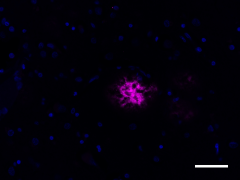
-

IHC staining of Biotin anti-β-Amyloid, aggregated antibody (clone A17171C) on formalin-fixed paraffin-embedded Alzheimer’s disease brain tissue. Following antigen retrieval using formic acid, the tissue was incubated with 5 µg/mL of the primary antibody overnight at 4°C, followed by incubation with Alexa Fluor® 647 streptavidin (Cat. No. 405237) for one hour at room temperature. Nuclei were counterstained with DAPI. The image was captured with a 40X objective. Scale bar: 50 µm
| Cat # | Size | Price | Quantity Check Availability | ||
|---|---|---|---|---|---|
| 856505 | 25 µg | $153.00 | |||
| 856506 | 100 µg | $347.00 | |||
Alzheimer's disease is characterized by the accumulation of aggregated Aβ peptides in senile plaques and vascular deposits. Aβ peptides are derived from amyloid precursor proteins (APP) through sequential proteolytic cleavage of APP by β-secretases and γ-secretases generating diverse Aβ species. Aβ can aggregate to form soluble oligomeric species and insoluble fibrillar or amorphous assemblies. Some forms of the aggregated peptides are toxic to neurons.
Product Details
- Verified Reactivity
- Human
- Antibody Type
- Monoclonal
- Host Species
- Rat
- Immunogen
- Recombinant human Abeta S26C dimer.
- Formulation
- Phosphate-buffered solution, pH 7.2, containing 0.09% sodium azide.
- Preparation
- The antibody was purified by affinity chromatography and conjugated with biotin under optimal conditions.
- Concentration
- 0.5 mg/mL
- Storage & Handling
- The antibody solution should be stored undiluted between 2°C and 8°C. Do not freeze.
- Application
-
IHC-P - Quality tested
- Recommended Usage
-
Each lot of this antibody is quality control tested by formalin-fixed paraffin-embedded immunohistochemical staining. For immunohistochemistry, a concentration range of 0.5 - 5.0 µg/mL is suggested. It is recommended that the reagent be titrated for optimal performance for each application.
- RRID
-
AB_2810721 (BioLegend Cat. No. 856505)
AB_2810722 (BioLegend Cat. No. 856506)
Antigen Details
- Structure
- Aβ denotes peptides of 36-43 amino acids generated from cleavage of APP by secretases. Aβ has an apparent molecular mass of about 4 kD.
- Distribution
-
Tissue distribution: Primarily nervous system, but also adipose tissue, intestine, and muscle.
Cellular distribution: Cytosol, endosomes, nucleus, plasma membrane, extracellular, and golgi apparatus. - Function
- The normal function of Aβ is not well understood. Several potential physiological roles have been proposed, including: activation of kinase enzymes; protection against oxidative stress; regulation of cholesterol transport; transcription factor, and as an anti-microbial agent.
- Interaction
- Tau, prion, α2-macroglobulin, apoE and apoJ, toll-like receptor 2 (TLR2), TLR4, TLR6, and their co-receptors CD14, CD36, and CD47.
- Ligand/Receptor
- Receptor for advanced glycation end products (RAGE), low-density lipoprotein receptor-related protein 1 (LRP1), glycoprotein 330 (gp330/megalin), P-glycoprotein.
- Biology Area
- Cell Biology, Neurodegeneration, Neuroscience, Protein Misfolding and Aggregation
- Molecular Family
- APP/β-Amyloid
- Antigen References
-
- Selkoe DJ. 1994. Annu. Rev. Cell Biol 10:373-403.
- O'Brien RJ, Wong PC. 2011. Annu. Rev. Neurosci. 34:185-204.
- Chen GF, et al. 2017. Acta. Pharmacol. Sin. 38:1205-1235.
- Gene ID
- 351 View all products for this Gene ID
- UniProt
- View information about beta-Amyloid on UniProt.org
Other Formats
View All β-Amyloid Reagents Request Custom Conjugation| Description | Clone | Applications |
|---|---|---|
| Purified anti-β-Amyloid, aggregated | A17171C | IHC-P,WB |
| Alexa Fluor® 647 anti-β-Amyloid, aggregated | A17171C | IHC-P |
| Biotin anti-β-Amyloid, aggregated | A17171C | IHC-P |
| Alexa Fluor® 488 anti-β-Amyloid, aggregated | A17171C | IHC-P |
Compare Data Across All Formats
This data display is provided for general comparisons between formats.
Your actual data may vary due to variations in samples, target cells, instruments and their settings, staining conditions, and other factors.
If you need assistance with selecting the best format contact our expert technical support team.
-
Purified anti-β-Amyloid, aggregated

IHC staining of purified anti-β-Amyloid, aggregated antibody... 
Western blot of purified anti-β-Amyloid, aggregated antibody... 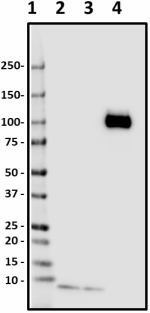
Western blot of purified anti-β-Amyloid, aggregated antibody... -
Alexa Fluor® 647 anti-β-Amyloid, aggregated
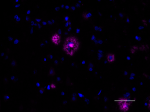
IHC staining of Alexa Fluor® 647 anti-beta amyloid, aggregat... 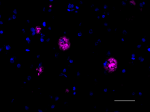
IHC staining of Alexa Fluor® 647 anti-beta amyloid, aggregat... -
Biotin anti-β-Amyloid, aggregated
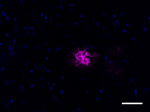
IHC staining of Biotin anti-β-Amyloid, aggregated antibody (... -
Alexa Fluor® 488 anti-β-Amyloid, aggregated

IHC staining of Alexa Fluor® 488 anti-β-Amyloid, aggregated...
